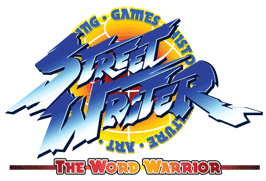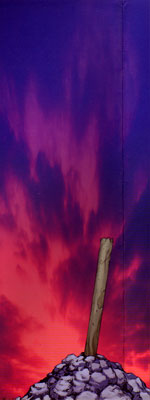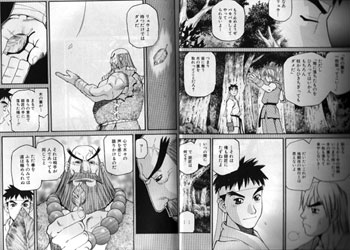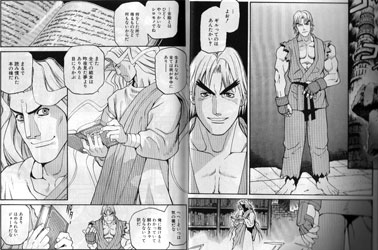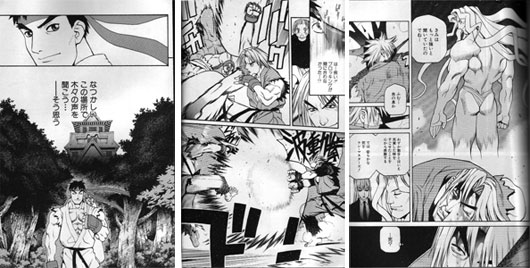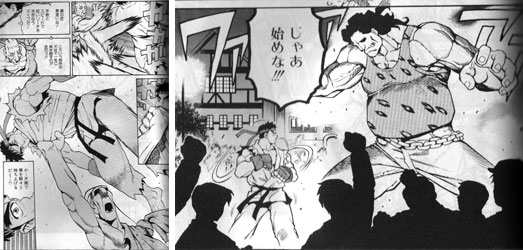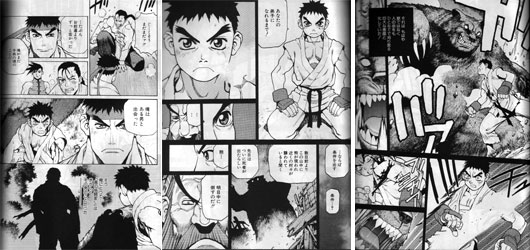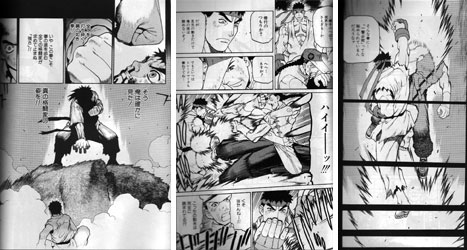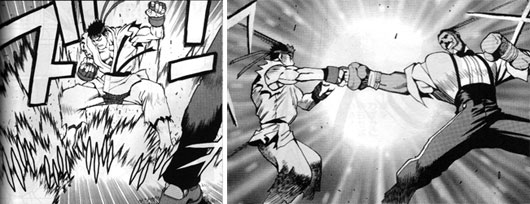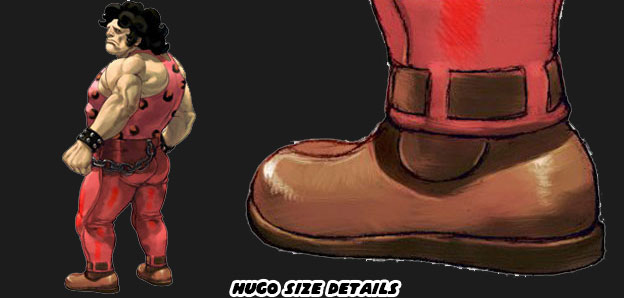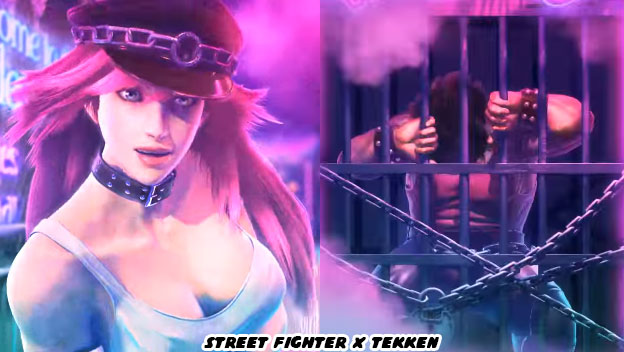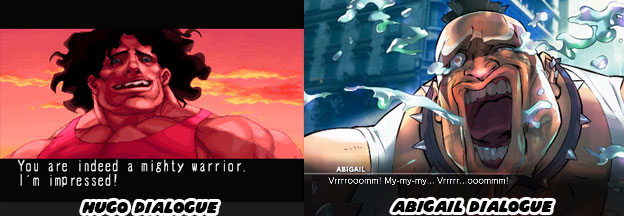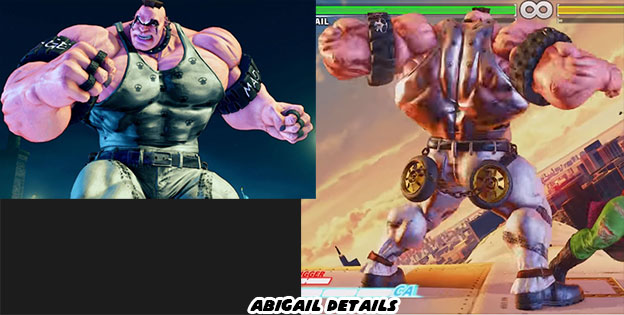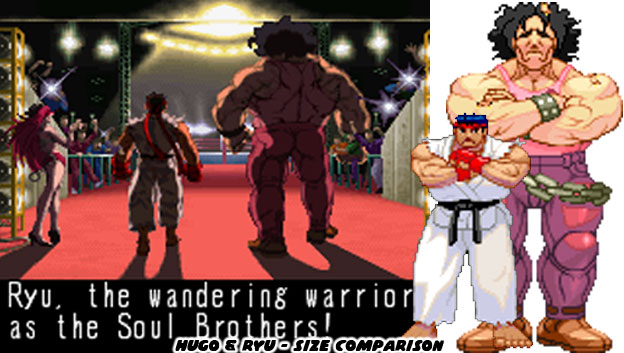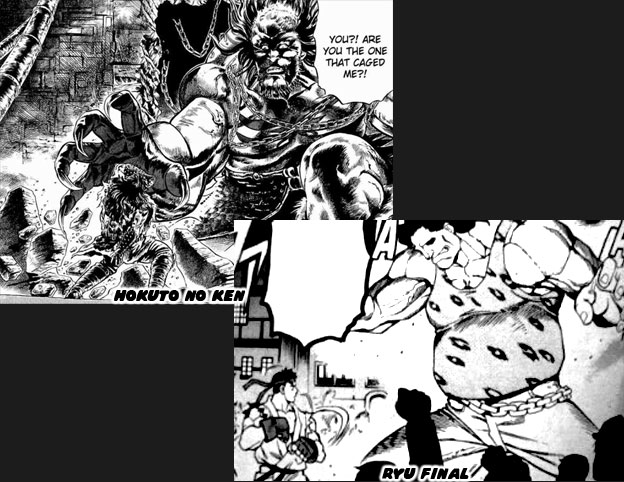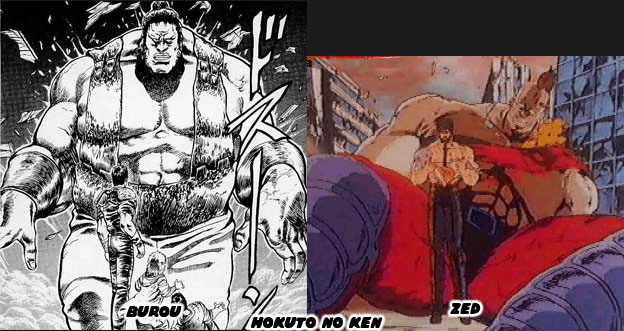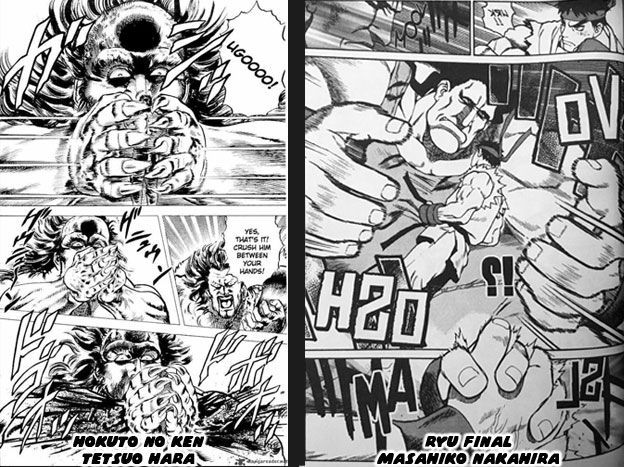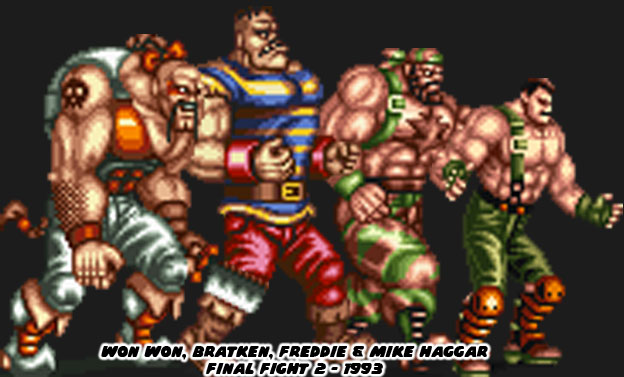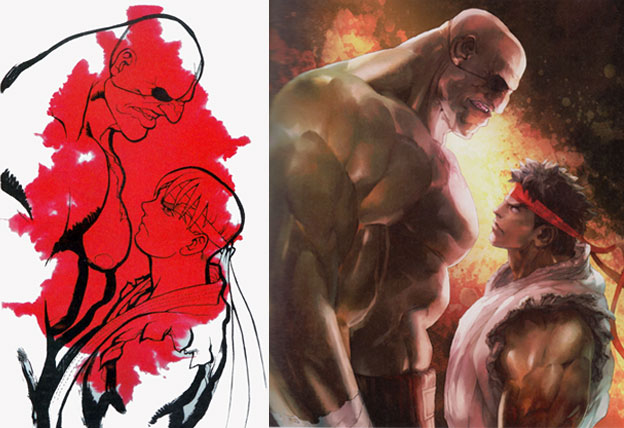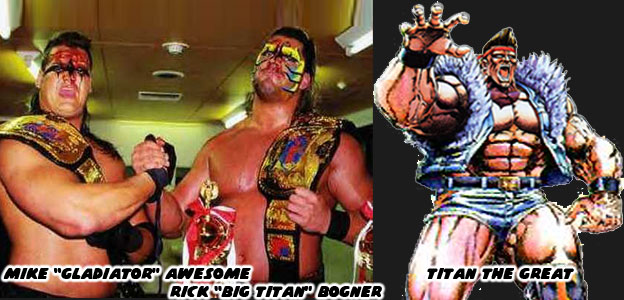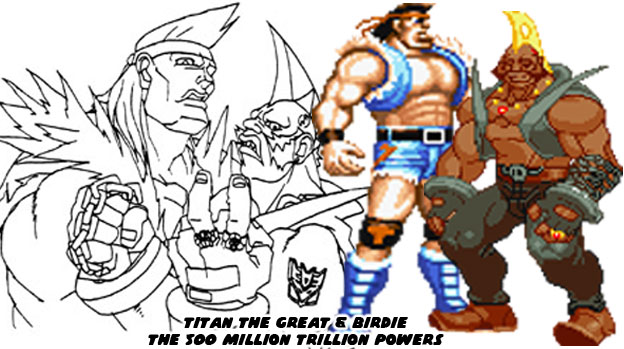Good morning friends, there's not much news to report today. Some family issues that I will see about later in the day, plus lawn mowing of course. Things are holding steady but right now I have to get back to work, one of the projectors blew a bulb so that's going to cost somebody money. Let's get back to the second (and final) book of Ryu Final. WARNING: if you would rather wait for the translated issue next month then skip today and tomorrow's blog. I will be talking about everything that happens in great detail.
This story does not begin with Ryu but the lessons learned are just as important as everything we saw in the first book. This is the story of Sagat, rather the lessons of Sagat. As the story starts we see Hugo's diesel truck parked outside of a temple in the heart of Thailand. Hugo is taking swings at Sagat. Although he towers over the mighty Thai, he is unable to land a solid hit on him. Sagat is motionless and allows Hugo to throw punches that don't seem to faze him. In a fit of anger Hugo lifts the stone head of a Buddha and throws it down on Sagat. It shatters into a million pieces and this gets a reaction. Sagat takes down the mighty giant with one kick. He then remembers his life of fighting.
The battle is over in a few hits.
THE END.
Now do you know why I am so critical of the Udon books? Why can they not write or draw anything as epic as Ryu Final? So what can we make from the end of this book? Well aside from the near-impossible surviving from a punch through the chest we can take many things for the future of the series in canonical and videogame terms. His surviving a death blow was foreshadowed by Sagat at the beginning of the book. Ryu returns not as a messiah but as a true martial artist. Ryu has learned to harness the power of a killing strike in his Fist of the Wind and seems to have finally completed his journey. From this point on he should hold a place of great importance in the universe, the transition from fighter to master. From this point on Ryu is no longer the intro into the world, or should not be. I am speaking in manga and videogame terms. From this point on Ryu should be something more... What should we expect if Capcom creates a true Street Fighter IV and not a II.5?
As always if you would like to sponsor me please visit my Patreon page and consider donating each month, even as little as $1 would help make better blogs and even podcasts!
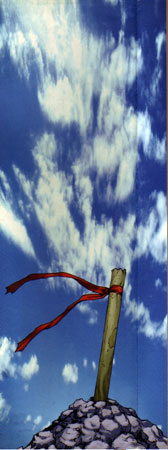
This story does not begin with Ryu but the lessons learned are just as important as everything we saw in the first book. This is the story of Sagat, rather the lessons of Sagat. As the story starts we see Hugo's diesel truck parked outside of a temple in the heart of Thailand. Hugo is taking swings at Sagat. Although he towers over the mighty Thai, he is unable to land a solid hit on him. Sagat is motionless and allows Hugo to throw punches that don't seem to faze him. In a fit of anger Hugo lifts the stone head of a Buddha and throws it down on Sagat. It shatters into a million pieces and this gets a reaction. Sagat takes down the mighty giant with one kick. He then remembers his life of fighting.

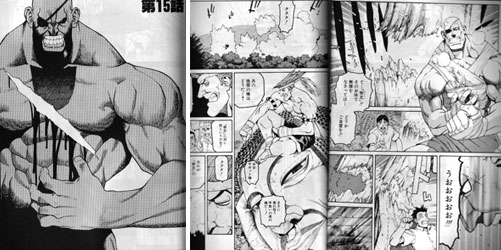
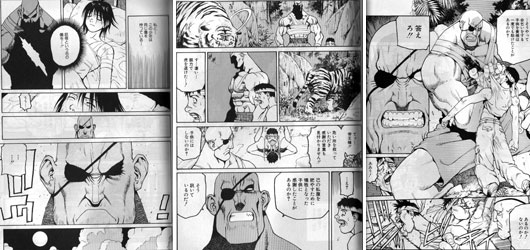

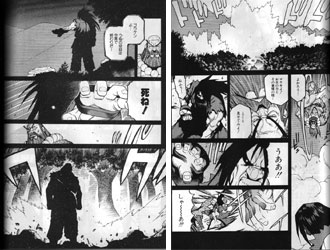
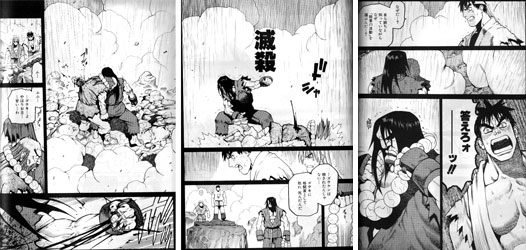
The battle is over in a few hits.
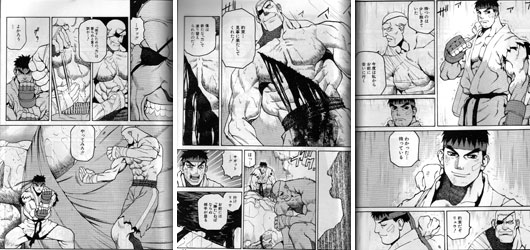
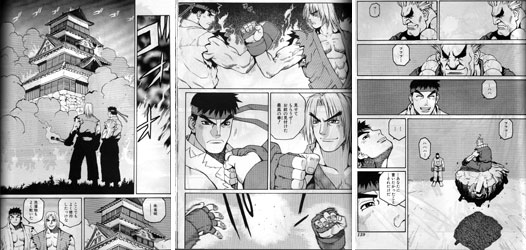


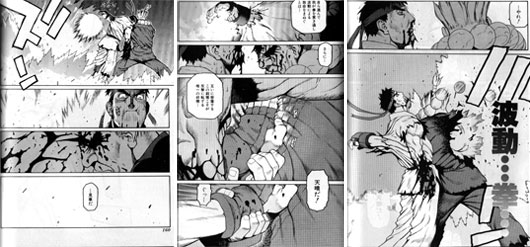

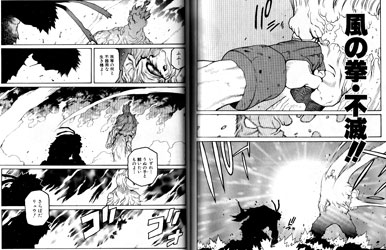
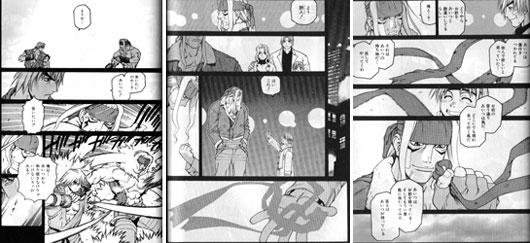
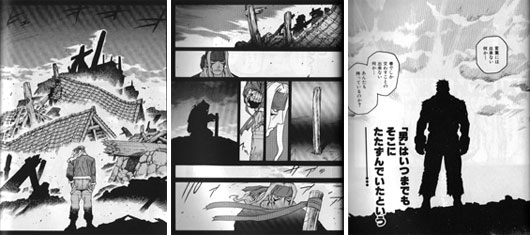
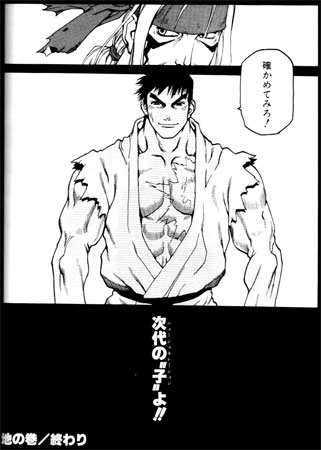
THE END.
Now do you know why I am so critical of the Udon books? Why can they not write or draw anything as epic as Ryu Final? So what can we make from the end of this book? Well aside from the near-impossible surviving from a punch through the chest we can take many things for the future of the series in canonical and videogame terms. His surviving a death blow was foreshadowed by Sagat at the beginning of the book. Ryu returns not as a messiah but as a true martial artist. Ryu has learned to harness the power of a killing strike in his Fist of the Wind and seems to have finally completed his journey. From this point on he should hold a place of great importance in the universe, the transition from fighter to master. From this point on Ryu is no longer the intro into the world, or should not be. I am speaking in manga and videogame terms. From this point on Ryu should be something more... What should we expect if Capcom creates a true Street Fighter IV and not a II.5?
